Discover Service Design Show
Service Design Show

301 Episodes
Reverse
I'm sure you've seen the news...At the outset, the recent announcement of the "America by Design" initiative and the new "National Design Studio" is quite exciting. It’s a huge spotlight on our field.But it also feels a bit strange, doesn't it? Because it wasn’t so long ago that the US government had 18F, an entire organization dedicated to improving the user experience of its services. And then, in early 2025, it was deemed "non-essential" and unceremoniously "deleted".One of the people right in the middle of it all was our guest, Ron Bronson. As the Head of Design at 18F, he was at the forefront of applying service design within the complexities of government. So, you can imagine that when Ron sat down with me for the conversation, it wasn’t just a walk in the park. We dove into some juicy questions that challenge the very core of our practice. Is service design too opaque and stuck in its own craft? What if we reframed our work as a form of “design as repair”? Why might AI actually be the biggest blessing for service design yet? I can assure you, this is a conversation that will get you out of your comfort zone in the best way possible. So, if you’re ready to be challenged with some fresh perspectives, make sure you tune in to this one.Even though we tackle some pretty huge topics in the episode, Ron brings it all back to a simple, powerful idea right at the end of the conversation. Can you take a guess? (Hint: it’s about zooming in, not out ).Enjoy the episode and keep making a positive impact!Be well,~ Marc--- [ 1. GUIDE ] --- 00:00 Welcome to Episode 23604:00 Who is Ron05:30 Service design is too opaque 07:45 Importing service design to the US09:30 Conversations designers should be having10:00 The "best service experience" during a crisis12:50 The Trojan Horse strategy for designers14:30 Creating a "pull" for service design from within17:30 The power of doing "uninvited" work23:00 Examples of a golden nugget26:00 Trust as a core deliverable27:00 What students get wrong about design29:45 The gap between conferences and reality32:00 Idea of consequence design34:30 Design as repair: A new mindset37:30 The "forward deployed" designer.39:30 What would change if we adopt this mindset 45:00 Making service design ubiquitous46:30 Right way to frame a problem48:30 Are organizations in the service business?51:30 The blessing & curse of "doing the work"54:15 How he hopes service design would look in 3-5 years57:00 AI: A blank space for service designers59:15 Questions to ask about AI1:01:14 Malicious path vs. ideal path1:02:45 A question to ponder1:04:30 What can you fix1:07:15 Get in touch --- [ 2. LINKS ] --- LinkedIn - https://www.linkedin.com/in/ronbronson/BlueSky - https://bsky.app/profile/ronbronson.com Website - https://www.ronbronson.design/ https://consequencedesign.org/ --- [ 3. CIRCLE ] --- Join our private community for in-house service design professionals. https://servicedesignshow.com/circle--- [ 4. FIND THE SHOW ON ] ---Youtube ~ https://go.servicedesignshow.com/236-youtubeApple ~ https://go.servicedesignshow.com/236-appleSnipd ~ https://go.servicedesignshow.com/236-snipdSpotify ~ https://go.servicedesignshow.com/236-spotify
This can't be true... It was a revelation that left Mauricio Manhaes in disbelief.
A disturbing pattern emerged during his research on what it means to cultivate a design-driven culture in everyday work.
Doing research is much like connecting dots, where individual stories often lack groundbreaking insights. However, unexpected patterns can suddenly emerge when you look across these stories.
And that's exactly what happened when Mauricio interviewed some of our field's most accomplished, experienced, and respected professionals. These professionals were generously sharing their work journeys and challenges.
But when Mauricio zoomed out and started to reflect on the stories, he realized these challenges weren't rooted in a lack of skills or resources. A deeper, systemic issue is at play, limiting design and designers from living up to their full potential.
Mauricio has recently published his findings and came on the Show to share them with us.
Join us to gain insights into what might be limiting your impact, and walk away with a practical tool to help you have constructive conversations about this topic with peers.
What I deeply appreciated about Mauricio's approach is that it's all about understanding and improving, not about assigning blame.
Enjoy the conversation, and as always keep making a positive impact.
~ Marc
--- [ 1. GUIDE ] ---
00:00 Welcome to Episode 186
06:30 Who is Mauricio
08:15 Lightning Round
17:45 Being part of the decision-making
20:00 What Social Exclusion is like
23:00 Verbal hostility in the workplace
24:15 Realizing the issue: Workplace Bullying
31:00 Feminity and design
38:00 Journey mapping the issue
43:00 Taking ownership of the issue vs being the victim
48:15 What should be explored next?
52:15 The action plan: what we should do
54:15 Get in touch with Mauricio
55:00 How can we devise more ways
--- [ 2. LINKS ] ---
LinkedIn - https://www.linkedin.com/in/manhaes/
Truths and Method by Hans-Georg Gadamer - https://shorturl.at/rBOQW
Why every company is already doing service design without knowing it / Mauricio Manhaes / Episode 20 - https://www.youtube.com/watch?v=VCjrMUz_gk0
Slidedeck used on the SDN Global Cafe - https://www.linkedin.com/posts/manhaes_to-fit-or-not-to-fit-touchpoint-vol-14-activity-7087067423404634113-358C
-- Compilation of the main discussion points that emerged after the SDN --
Cafe and the related LinkedIn post (above) - https://www.linkedin.com/pulse/designers-treated-like-women-organizations-mauricio-manhaes-ph-d-/
SDN link to the article - https://www.service-design-network.org/touchpoint/tp14-1-the-employee-journey/tp14-1-to-fit-or-not-to-fit
Download the Journey Map - https://drive.google.com/file/d/1TGW2TmcvIZSg6pV53wU4Z4l4ECHXUzGF/view?usp=drive_link
--- [ 3. CIRCLE ] ---
Join our private community for in-house service design professionals. https://servicedesignshow.com/circle
Okay, we are pretty good storytellers... but are we telling the right story?As service design professionals, we nail it when it comes to what I call "Horizontal Storytelling". We can walk anyone through the customer journey, step-by-step, building empathy for the user's pain and frustration over time.But here is the somewhat inconvenient truth: As you might have experienced, your CEO or CFO often doesn't know what to do with that story. They are looking for something else. They need "Vertical Storytelling".They need to know how a specific pain point on the ground connects up to the strategic objectives of the business. They need to know the ROI. They need to know if the needle is actually moving.In episode 8 of the Journey Management Playbook series, Tingting Lin and I are closing the loop. We are moving from doing the work to measuring the impact.If you’ve ever struggled to justify prove that your journey management efforts are actually influencing the bottom line, this episode is for you.We dive into:How you can translate customer empathy into business language to get buy-in.Why you can't just rely on churn or NPS as your metrics, and how to find early warning signals that prove your work is having an effect now.How to connect your solutions back to the original business challenge to see if you actually solved the problem.And how to start measuring impact today without having to wait for perfect data integrations.This episode provides the missing link between "making mapping a journey" and "driving business outcomes."What is the one metric you struggle to track the most? Send me a reply or leave a comment on YouTube, we’d love to know where the biggest data hurdles are for you.Enjoy and keep making a positive impact!Be well, ~ Marc--- [ 1. LINKS 🔗 ] ---👉 Playbook Slides - ✅ Sign up for TheyDo - https://go.servicedesignshow.com/scjwb--- [ 2. GUIDE ] --- 01:00 What's in store episode 0803:45 Power of Vertical Storytelling05:30 Proving Your Journey Map Worth the Investment07:00 Biggest Mistake People Make in Journey Mapping11:00 When a Simple Insight Changes Everything16:30 'Horizontal' View vs. the 'Vertical'23:00 How to Operationalize Your Journey Map25:00 Start Small, But Map the Full Customer Story26:00 Closing the Loop and Feedback Mechanisms30:00 Summary: 3 Pillars of a Successful Journey Strategy31:34 Differentiating Horizontal and Vertical Stories33:00 Overcoming Internal Resistance to New Mapping36:00 Stakeholders as customers38:45 Translating Empathy into Actionable Design39:45 Mapping an Employee Onboarding Journey45:00 Debunking misconceptions50:30 Software and Resources We Recommend54:45 Second Essential Technique58:00 Final Takeaways & Last-Minute Advice 1:00:00 5 Practical Tips You Can Implement Today--- [ 3. FIND THE SHOW ON ] --- Spotify ~ https://go.servicedesignshow.com/journey-management-playbook-08-spotifyApple ~ https://go.servicedesignshow.com/journey-management-playbook-08-appleSnipd ~ https://go.servicedesignshow.com/journey-management-playbook-08-snipdYoutube ~ https://go.servicedesignshow.com/journey-management-playbook-08-youtube
Service design, so what...That's a question still many people around us (rightfully) ask.And let's be honest, they'll probably keep asking it for the foreseeable future.It will take a very long time before our field becomes a household name, which I doubt it ever will.Now, it’s easy to get frustrated about this, to roll our eyes every time someone questions the value of our work. But that frustration isn't going to get us any closer to creating the impact we know we can.A much more productive approach is to prepare for these questions, to have our answers ready before they even get asked. This also helps us to better recognize when we end up in situations where, no matter what we say or do, our message about service design just stand a chance of resonating.We do everyone a favor by acknowledging this. Sometimes it's just not the right place or the right time.But where do we learn which stories to tell, when and to whom, and which stories we should avoid?Well, we can take some clues from Mark Howell, our guest this in this episode.Mark is a seasoned professional who's led some of the largest in-house service design teams I've heard of. This achievement becomes even more impressive when you consider he did this in industries not exactly known for their human-centered thinking.In our conversation, we explore how Mark used tools like a "service design quality assessment" to have the right conversations with stakeholders. We talk about how he learned to identify the red flags that signal it's time to find a different project, and we dig into the key role community plays in building a successful service design practice.I'm really excited about this episode because we just don't have many examples of people who have scaled service design teams to these kinds of numbers. And we have even fewer who are willing to share the real learnings from that journey.So, if you have the ambition to grow service design, this is a fantastic conversation to get some best practices and hear about the pitfalls to avoid.What stuck with me from our chat is recognizing that sometimes you need to take a step back instead of just trying to push forward (and burning out in the process).I would love to hear from you: What's a key signal for you? What's the clue that gives away that it's time to stop pushing and find a different battle?Enjoy and keep making a positive impact! ~ Marc--- [ 1. GUIDE ] --- 00:00 Welcome to Episode 24105:00 Positioning Service Designers09:00 Cracking the Organizational Nut13:30 the 3 disciplines to drive perspective20:00 His Take on Journey Mapping25:30 Lessons Learned29:00 The Red Flags of a Failing Project31:45 How to Spot Red Flags34:30 The 4 Quality Indicators40:00 Defining the Indicators46:00 Collecting Design Quality Data48:30 The Design Community of Practice56:45 Aligning with Product Manager OKRs1:02:00 Question to ponder --- [ 2. LINKS ] --- https://www.linkedin.com/in/markhowell-phd --- [ 3. CIRCLE ] --- Join our private community for in-house service design professionals. https://servicedesignshow.com/circle[4. FIND THE SHOW ON]Youtube ~ https://go.servicedesignshow.com/241-youtubeSpotify ~ https://go.servicedesignshow.com/241-spotifyApple ~ https://go.servicedesignshow.com/241-appleSnipd ~ https://go.servicedesignshow.com/241-snipd
Have you ever thought about...What a therapist, a grandma, and an organ donor teach you about service design?I know, this might sound like the start of a strange joke, but it gets to the heart of a big truth about our work. We invest a lot of time perfecting our journey maps, blueprints, and personas. But as we know, the challenges we work on won't be solved by a deliverable.They're solved through invisible "tools" like subtle influence, creating space for others, and building strategic relationships. So, where do you find these tools? Well, this episode is a great start.This episode is part of our "Inside Service Design" series, where we explore the real, unpolished practice of driving change from within organizations.And just like in the previous episodes you get to hear two brilliant in-house professionals, share some of their most powerful, non-traditional strategies. This time we're joined by Irina Damascan and Gina Mendolia.Gina walks us through her concept of "Setting the Trap" for engagement, and how she draws inspiration from the roles of therapists, coaches, and even grandmas to master the art of creating space and enabling teams to connect the dots themselves. Irina introduces a powerful model for influence she calls the "Organ Donor Chain," a strategic way to build networks of reciprocity by doing "favors" that enable change across the organization, often in unexpected ways.I have to say, it was refreshing to hear about effective mental models that go beyond design-as-usual, which aren't just theories but truly help to design better services.Want to add some (unconventional) tools that help you drive change to your toolkit? Grab your notebook and join us for this conversation.What's the most unconventional place you've found inspiration for your work? Maybe a different profession, a hobby, a movie? Share your inspiration in the comments on YouTube and let's continue the conversation there.Keep making a positive impact!~ Marc--- [ 1. GUIDE ] --- 00:00 Welcome04:30 Who is Ben06:00 How Heydn got his role07:15 What Heydn is currently doing08:15 Ben working at a financial services firm10:15 who Ben is reporting to11:30 where Autodesk sits13:15 what a good looks like for Heydn16:30 indicators of success17:30 what success looks like for Ben23:30 Why Context Determines Your SD Strategy27:00 Ben's topic: the first 90 days30:45 Heydn's key takeaway35:00 Making Your Map Complicated on Purpose37:00 Ben's takeaway43:00 the last time he has done the first 90 days46:45 Heydn reacting48:45 Learning things the hard way51:00 Ben's hard lessons55:00 what keeps him motivated57:30 what will Heydn get back there1:00:00 Ben to summarize1:00:30 Heydn's final words of wisdom --- [ 2. LINKS ] --- https://www.linkedin.com/in/heydnhttps://www.linkedin.com/in/benmccammon/ --- [ 3. CIRCLE ] --- Join our private community for in-house service design professionals. https://servicedesignshow.com/circle[4. FIND THE SHOW ON]Youtube ~ https://go.servicedesignshow.com/inside-service-design-06-youtubeSpotify ~ https://go.servicedesignshow.com/inside-service-design-06-spotifyApple ~ https://go.servicedesignshow.com/inside-service-design-06-appleSnipd ~ https://go.servicedesignshow.com/inside-service-design-06-snipd
We've got a serious problem...The "higher" you climb on the career ladder, the further removed you get from the actual discipline of design.Unfortunately, it's a story I hear surprisingly often. A design professionals finally gets that hard-earned seat at the table, and almost immediately, the pressure to conform kicks in.They start to feel like they have to trade their unique perspective for a corporate persona, leaving their design identity, the very thing that got them there in the first place, at the door.Our guest this week, Jose Coronado, shares a personal story that actually goes right to the heart of this issue.When he first moved to the U.S. he consciously separated his professional life from his Hispanic background in an effort to belong and be seen.The shift only came years later, after he organized a panel for Hispanic Heritage Month. The feedback he received hit him hard. People told him, "Jose, thank you for doing this. I have never seen myself reflected in my future as a potential leader in the design field". That experience was the moment he realized the power of bringing our "whole self" to work, and the danger of hiding parts of our identity.So in this episode, we explore this identity crisis. How do you evolve into a business leader without abandoning your design soul? And I can already share that it's not about renouncing your craft, but rather enriching it with new layers.It’s about learning to navigate the politics and negotiations of an organization while still proudly carrying the flag for design.If you feel trapped between the design professional you are and the leader you're expected to be, this one will surely resonate.What I loved about this conversation is the nuance it brings. I'm sure you've heard that "designers need to speak business" but what's often missing is the crucial second half of that advice, we must do it with our design expertise, identity, and skills. Business speak should enrich design, not replace it.Enjoy the conversation and keep making a positive impact!~ Marc--- [ 1. GUIDE ] --- 00:00 Welcome to Episode 24004:00 The great shift06:00 The catalyst08:00 Design Leadership and Why We Have to Talk About It09:30 Design's Growing Pains12:00 3 Levels of Leadership 13:00 Craftsmanship, Stagemanship, and Statesmanship16:00 Mastering Stagemanship: 17:45 What we're doing wrong20:00 Developing Business Fluency22:00 Understanding the context26:30 Low-Effort Ways to Gain Business Knowledge33:00 The Challenge of Invisibility35:00 Patience vs. Incompetence37:45 Building Trust39:00 The Design Measurement Problem41:00 Tangibility of Impact44:00 Navigating conversations like that46:45 Finance Conversations48:00 Connecting Process, Service Improvement, and Design51:45 Internal Struggle and Mindset Evolution55:00 Embracing out identity57:30 Maintaining Connection to the Craft59:00 Deliver in commitment1:01:00 Question to ponder --- [ 2. LINKS ] --- https://www.linkedin.com/in/josecoronado/ --- [ 3. CIRCLE ] --- Join our private community for in-house service design professionals. https://servicedesignshow.com/circle[4. FIND THE SHOW ON]Youtube ~ https://go.servicedesignshow.com/240-youtubeSpotify ~ https://go.servicedesignshow.com/240-spotifyApple ~ https://go.servicedesignshow.com/240-appleSnipd ~ https://go.servicedesignshow.com/240-snipd
Here's the big problem with journey maps...It's often like you've composed a masterpiece, but no one is there to actually play it.This is what I feel when I see a carefully crafted map (our version of "music on paper"), which ultimately fails to make an impact. Sure, we do the research, map the insights, and identify opportunities, but on Monday morning, everyone just goes back to their old routines, checking off to-do items in Jira, ClickUp, or Asana.The map becomes an impressive visual, but it's disconnected from the way work is done.This is the implementation gap, and it's where most journey management efforts fail.So in episode 7 of the Journey Management Playbook series, Tingting Lin and I address this exact problem head-on. This isn't a guide about what to map rather, it's about how to plug your insights into the operational reality of your organization.We're moving beyond the theory and into the practical, day-to-day workflow.I even share my own project management setup, share how things get done in my business and we discuss how to bridge the gap between my project list and the customer journey.In this episode, you'll hear:* Why creating a "parallel workflow" for journey management is a recipe for failure.* How to "plug into" your organization's existing ceremonies.* A practical way to reverse-engineer your team's current project backlog and to connect it back to the journey.* The right way to use prioritization matrixes to spark stakeholder conversations and grow alignment.So if you want to make your journeys the driving force behind your daily decisions, not just another document lost on a hard drive or fading away on the wall, make sure you don't miss this one.--- [1. LINKS ] ---Playbook Slides - https://go.servicedesignshow.com/-sofmSign up for TheyDo - https://go.servicedesignshow.com/scjwb --- [ 2. GUIDE ] ---00:00 Welcome to TheyDo EP 0702:00 Implementation gap03:00 Defining the Operational Workflow06:00 The Practical Challenge09:00 Connecting the Triple Diamond to the Music Metaphor12:45 Understanding the big picture15:30 Connecting the churn-reduction journey map 16:30 Journey Management to Project Management 19:30 Modeling initiatives in TheyDo to show a successful integration approach21:30 How to Model Initiatives in TheyDo for Journey Linkage24:00 Linking Initiatives to Opportunities/Journeys25:30 Scoring Initiatives by Impact and Effort28:00 Connecting Discovery (TheyDo) to Delivery (ClickUp/JIRA)30:15 Context in the Journey Tool 32:00 Bi-directional Synchronization34:00 How to set up the connectio35:45 Understanding the Organizational Workflow37:30 Handoffs between the Triple Diamond Workflow39:00 How to Implement the Workflow 41:00 The needed Cultural shift42:00 Impact driven language44:30 How to handle non-journey work47:00 The Workflow is not a Designer's Job Alone49:00 Recap: The 4 steps50:30 Journey of the Journey Manager54:30 Journey Framework for Strategic Alignment56:30 Ensuring Business Value 58:00 Scaling and Governance1:02:30 Coming Up Next --- [ 3. FIND THE SHOW ON ] --- Youtube ~ https://go.servicedesignshow.com/journey-management-playbook-07-youtubeSpotify ~ https://go.servicedesignshow.com/journey-management-playbook-07-spotifyApple ~ https://go.servicedesignshow.com/journey-management-playbook-07-appleSnipd ~ https://go.servicedesignshow.com/journey-management-playbook-07-snipd
What is the thing biggest stopping you from doing meaningful work...When I listen to the service design professionals around me, it's often not the tools or methods they have access to.Rather, and you might recognize this, its often the organizational culture that's the biggest roadblock.Culture isn't the set of company values that are displayed on the wall. If only things were so simple Culture is materialized by actions. It's made up of the lived experiences of the people doing the work day in and day out.So, if the existing org culture is a roadblock, how can we change it?Because as we know, if there is one thing that's great at resisting change, it's culture.And do we even have a place here as service design professionals. Isn't this the field of expertise of strategy consultants?Well, our guest, Dan Szuc has been working on this question for the last 20 years. He's so deep into it that he written two books on this topic Make Meaningful Work and Make Meaningful Culture.And the good news is that, yes culture is 100% an area where we need to play a role.We can look at culture as a design material that can be shaped.In this episode we explore how that works in practice, where you even start and the pitfalls that you should be mindful.We get into practical techniques like "practice spotting", talk about "moments that matter" and explore the influence of leadership (and lack of it).This episode is for everyone who want's to contribute to making "shitty" work environments into ones that are better equipped to help you do meaningful work!Culture often feels like a huge, intangible and sometimes even scary topic to touch. I hope that this conversation help see that there are small, practical, tangible actions you can do to start shaping a better culture today and the confidence to do so!Enjoy and keep making a positive impact.Be well,--- [ 1. GUIDE ] --- 00:00 Welcome to Episode 23904:00 Culture at work04:30 Moving Beyond "Soft Skills"06:45 Professional Acting to Organizational Culture10:30 Introducing SPARKLE13:00 the SPARKLE Acronym16:00 Small Acts, Big Change23:30 Power of Practice Spotting30:30 Why People Hesitate to Change34:00 Rules vs. Practice41:00 How to do practice spotting 45:30 Challenge of Engagement50:30 Introducing New Practices to Your Team54:30 Small Practice to Organizational Shift57:00 Best case transformation1:00:15 What Dan is Working on Next1:02:30 Resources1:04:30 Question to ponder --- [ 2. LINKS ] --- LinkedIn - https://www.linkedin.com/in/danielszucMMW LinkedIn Newsletter - https://www.linkedin.com/newsletters/make-meaningful-work-7327884648296972288/Apogee - https://www.apogeehk.com/Make Meaningful Work - https://www.makemeaningfulwork.com/ MMC Book - https://www.amazon.com/dp/173792823X --- [ 3. CIRCLE ] --- Join our private community for in-house service design professionals. https://servicedesignshow.com/circle-- [ 4. FIND THE SHOW ON ] --- Youtube ~ https://go.servicedesignshow.com/239-youtubeSpotify ~ https://go.servicedesignshow.com/239-spotifyApple ~ https://go.servicedesignshow.com/239-appleSnipd ~ https://go.servicedesignshow.com/239-snipd
I recently started playing Padel...And like with all my new hobbies, I enjoy getting good gear.So after some research, I treated myself to a racket from the higher end of the market.Now, when I'm on the court playing and lose, I could (might) complain that my racket sucks. That it was "false advertising" because all the specs indicate that this is almost an unbeatable racket.But let's be honest, we both know that's probably not the case. It’s far more likely that I just don't yet know how to use this new "tool" to its fullest potential.You may be surprised to learn that this is strikingly similar to what happens in many organizations.They invest in building a service design capability, but after a while, they complain that it’s not delivering the game-changing results they hoped for.So, does service design suck?Well, according to the research our guest Giles Colborne has done, the answer is a definitive no. In fact, he found that companies with high design maturity grow at 9x times(!) the pace of everyone else.The problem, as Giles argues, isn't the tool. It's the interface between the design team and the rest of the business.It's like spending a small fortune on that pro-level racket, only to hold it upside down in the wrong hand, and then wonder why you're not winning any games.When organizations bring in service design without creating the right conditions for success, they end up frustrated and disillusioned.So, what can we do about it? The go-to response I often see in our field is that we tend to shout louder, to do a "roadshow" and "educate" the business on our value. But Giles explains why this is actually often the least effective approach.That's why in this episode, we explore how we can stop explaining the tool and start changing the way our organizations use it, making it easier for them to unlock its full potential.What's great about this is that it helps shift the perception of service design from an afterthought, a "nice-to-have" for keeping customers happy, to an engine for growth. And once that clicks, it becomes a whole different game. Now, I'm just hoping the same will be true for my padel skills...Enjoy the conversation and keep making a positive impact.Be well,~ Marc--- [ 1. GUIDE ] --- 00:00 Welcome to Episode 23801:00 Proving Measurable Impact03:30 Design is seen as a 'Nice-to-Have'05:00 The Board's View: Money First, UX Second08:30 The Checkout Gail11:00 Research: 9x Growth via Design Maturity15:00 The "Messy Middle" is an Interface Problem17:45 Stakeholder Trap: "Build Us One of These"22:15 Strategy: Investigate, Don't Educate26:30 Flipping the narrative28:30 Why Benefits Don't Resonate30:30 The "Gaslighting" Feeling33:30 Design is Not Incompatible with Business35:30 The Next Level: Culture and Governance36:45 Example: Flipping Compliance38:45 Process vs. Culture32:00 Start Point: Ask About Business Goals43:15 What the Org Really Values (Cost)44:45 Tough Questions for Stakeholders46:45 Anchoring CX in Governance49:00 Our Role in Measurement51:45 Mapping Value to Commander's Intent54:00 The Uncomfortable Aspect of Rigor57:30 Cultivating Confidence in Your Toolkit59:45 Leadership Over Arrogance1:03:00 3 Final Key Takeaways1:06:30 Resource Use: Automation and AI1:07:15 Question to Ponder1:08:15 Resources --- [ 2. LINKS ] --- https://uk.linkedin.com/in/gilescolborne --- [ 3. CIRCLE ] --- Join our private community for in-house service design professionals. https://servicedesignshow.com/circle-- [ 4. FIND THE SHOW ON ] --- Youtube ~ https://go.servicedesignshow.com/238-youtubeSpotify ~ https://go.servicedesignshow.com/238-spotifyApple ~ https://go.servicedesignshow.com/238-appleSnipd ~ https://go.servicedesignshow.com/238-snipd
Do you ever wonder about the "so what?" of your journey maps...To this day, I often see that journey mapping is treated as a "documentation" exercise. Basically as a way to visualize our customers experiences. And while having that visual overview is useful, it's just the beginning.As you probably know, the real challenge is turning that understanding into action that actually impacts your customers (and your business). Not a small challenge by any means.That's why this episode of The Journey Management Playbook is fully dedicated to it.We're already into episode six of the series, and if you haven't seen the previous ones, you can find the full playlist in the show notes. So far, we've gone from defining a business challenge to using AI to generate and enrich insights. We’ve covered how to structure and simplify your journey to be more action-biased.But all of that work is just a foundation. The journey map we've created is a reflection of the current state, and the key question still remains: What do we do now?In this episode, Tingting Lin from TheyDo and I finally answer that question. We dive into the crucial building blocks of opportunities and solutions, and you’ll see what is key to turning your journey maps from static documents into dynamic drivers of lasting business impact.We also tackle a few common pitfalls to avoid like:Jumping to solutions before defining opportunities.Cheating with the opportunity statement.The tendency to over-document.And turning journey management into a separate workflow.As you'll hear, this episode is again packed with practical advice to help you move beyond mapping to true journey management in the most effective way.What are your biggest challenges in moving from insights to action? Leave a comment on YouTube or Spotify, or reach out on LinkedIn. We'd love to hear from you.Enjoy and keep making a positive impact!Be well,~ Marc---[1. LINKS 🔗 ] ---👉 Playbook Slides - https://go.servicedesignshow.com/ofmtc✅ Sign up for TheyDo - https://go.servicedesignshow.com/prcde--- [ 2. GUIDE ] --- 01:00 Recap from previous episode04:00 Core Problem with Static Journey Maps06:00 Introducing the "Solutions" Building Block10:00 Defining "Opportunities"12:00 The triple diamond workflow15:30 Real-world opportunity16:00 Why we separate Opportunities & Solution18:30 Where to look for the opportunity first22:00 Off-boarding Problem as a Case Study24:30 Connecting the Problem to the Solution Quickly28:00 Distinguishing Between Problems and Opportunities32:00 Pain Point to an Opportunity36:30 Importance of Language in Naming Opportunities38:00 Debate About Using AI in this Process40:00 Who are we writing these opportunities for45:00 Connecting Opportunities to Strategic Objectives47:00 Summary of Opportunities49:00 Transitioning to "Solution" Blocks51:00 Example of a Concrete Solution59:45 Practicality of Using Solution Types1:02:00 Defining Statuses1:06:00 Connecting Solutions to Opportunities1:08:00 Final Summary --- [ 3. FIND THE SHOW ON ] --- YouTube ~ https://go.servicedesignshow.com/journey-management-playbook-06-youtubeSpotify ~ https://go.servicedesignshow.com/journey-management-playbook-06-spotifyApple ~ https://go.servicedesignshow.com/journey-management-playbook-06-appleSnipd ~ https://go.servicedesignshow.com/journey-management-playbook-06-snipd
The things service design professionals have to deal with...Okay, so your boss tells you drive to a place with “a great view,” hands a full tank of gas, and wished good luck. Oh and by the way, we need to be there in 30-days, no compass, no map.Now take a guess, how likely is it that after a month you'll have arrived at exactly the location they had in mind. I'd say anything higher than 0 is an optimistic perspective.This sounds pretty absurd, right? But I'm not making it up.But how often have you been in that exact situation at work? The destination is vague, nobody can tell you where you are today, and there’s no way to know if your actions are actually moving you in the right direction. And the cherry on top is when you're asked for hard evidence that you're getting closer, while someone else gets praised for reporting a higher average speed than last week. Yeah, but dude, are we even moving in the right direction? So painful and frustrating.If you didn’t know better, you might think this is the plot of a bad comedy. But based on the conversations I'm having, this isn't an exception; it's the daily reality for most of you.So, what are we going to do about it?Even though the situation might feel a bit hopeless, the good news is that it’s certainly not. Last year, I had Stacey Barr on the show to talk about measurement. She’s spent her career becoming an expert in using measures as a truth seeker. Guess what that conversation became the most-watched episode of the year.In this episode, Stacey is back to show us how to untangle this mess.There’s a remarkably simple process, that looks a lot like design, to get from vague goals to meaningful measures, clear targets, and effective actions. It’s a method that gives you real leverage to achieve the impact you want to make. So if you want to learn how to put measures in place that are actually meaningful, prove your work is moving the needle, and do it with more confidence, definitely don’t miss this episode.What's becoming clear to me is that we’re actually really good at this. We thrive in scenarios where things are undefined. We know how to figure stuff out and iterate our way forward. So once you grasp that finding the right measurements is just another design challenge, you might actually start looking forward the process...Enjoy and keep making a positive impact!Be well~ Marc--- [ 1. GUIDE ] --- 00:00 Welcome to Episode 23703:45 Measurement's surprising popularity04:30 Stacey Barr on Service Design06:00 Breaking down the measurement puzzle09:00 Measuring for empowerment10:00 addressing the gap16:30 Company cultures22:30 Beyond shipping stuff23:30 The problem when starting with measures24:00 What does influence actually mean27:00 Reverse engineering the goal29:00 The Net Promoter Score Trap32:00 Measuring across silos34:00 Challenge of individual KPIs and quotas37:00 Strategies for creating paradigm shifts40:30 Setting meaningful targets 45:45 Challenge of human-related data 52:45 defining and measuring the gap56:45 Casuality vs correlation01:1:45 The patience to shift big goals 1:03:45 The PUMP Results Map1:04:15 Introducing PUMP Light1:07:00 Where to Sign Up1:07:45 Discount for the program1:08:15 Question to ponder --- [ 2. LINKS ] --- https://www.linkedin.com/in/staceybarr/The PuMP Lite Program - https://pump.academy/pumplite/https://pump.academy/ --- [ 3. PROMO ] ---Use code SDS10 to get 10% off the PuMP Lite program, running November 11-13 and 25-26, 2025. --- [ 4. CIRCLE ] --- Join our private community for in-house service design professionals. https://servicedesignshow.com/circle --- [ 5. FIND THE SHOW ON ] ---Youtube ~ https://go.servicedesignshow.com/237-youtubeSpotify ~ https://go.servicedesignshow.com/237-spotifyApple ~ https://go.servicedesignshow.com/237-appleSnipd ~ https://go.servicedesignshow.com/237-snipd
Are you tired of proving the value of service design… over and over again?Well, I'm happy to share that you're not alone. It's one of the most common frustrations I hear from professionals in our field. You work hard, you get a win, you move the needle... and then the next project starts, and it feels like you're right back at square one, making the case all over again. Sound familiar.Many of us feel stuck in this endless "prove it" loop, wondering how to get service design to move from a special invitation to a fundamental expectation.So, how do you break the cycle? How do you build momentum that lasts?That’s the challenge we take head on in this episode of our Inside Service Design series.In this series we explore the real, unpolished practice of driving change from within organizations.For this conversation, I was joined by two brilliant in-house professionals, Nancy Samayoa and Sara Langston, who are deep in the reality of this work every day.They share some honest and insightful perspectives on this struggle.Why service design can sometimes be perceived as a "threat" to the status quo.The moment they realized very few actually have seen service design at a true "scale" stage, and why that can feel so disheartening.And a powerful reframe: how to (re)define success by celebrating the small, daily, "invisible" wins that truly build momentum and prevent burnout.As with all the conversations in this series what you'll be getting isn't just some interesting theory. It's a practical guide to shifting your mindset from chasing big, elusive victories to appreciating the daily progress that ultimately leads to lasting change.So if you’re ready to hear how to play the long game and find sustainable ways to make an impact, this conversation is for you.I'm curious, have you made a habit of celebrating the small, "invisible" wins? If so how are you doing that? And if no, what's stopping you?Enjoy the conversation!Be well,~ Marc--- [ 1. GUIDE ] --- 00:00 Welcome to August Round Up04:30 Sara's unexpected journey in service design06:30 Unexpected transferability of skills09:30 Nancy's path from architecture to service design12:30 "Gung-ho" applicant and a surprising hiring manager14:30 Challenges of working on in-house projects17:30 The "ooh," "ah," and "oh no" moments19:30 How service designers are approached for projects20:30 Service design as a perceived "threat" in government23:00 Linking service design activities to positive outcomes25:30 Getting past the "endless proof" stage28:30 Garden metaphor = design maturity31:45 Challenge of getting from the "prove" to the "scale" stage33:45 Risk of service design 36:30 Applying models without feeling disheartened38:00 What scaffolding looks like in service design40:30 Focusing on celebrating the wins42:00 Why we tend to focus on problems over success stories43:15 Redefining success and progress 44:00 How Nancy views her wins46:00 The Circle as an extended SD team48:15 Sara's expectations51:15 Nancy's service design expectations52:45 SD skill: Relationship building56:45 Treating stakeholder relationships like a research project57:00 Other key skill: Curiosity59:30 Question to ponder1:02:15 Final words of wisdom from Sara1:03:30 Final words of wisdom from Nancy --- [ 2. LINKS ] --- https://www.linkedin.com/in/nancy-designer/https://www.linkedin.com/in/sara-langston/ --- [ 3. CIRCLE ] --- Join our private community for in-house service design professionals. https://servicedesignshow.com/circle--- [4. FIND THE SHOW ON] ---Youtube ~ https://go.servicedesignshow.com/inside-service-design-05-youtubeSpotify ~ https://go.servicedesignshow.com/inside-service-design-05-spotifyApple ~ https://go.servicedesignshow.com/inside-service-design-05-appleSnipd ~ https://go.servicedesignshow.com/inside-service-design-05-snipd
All you want to do is run away…Okay, so you’re standing in a boardroom overlooking a beautiful vineyard, leading a workshop for a major client, and the only thing that's going through your mind is: How do I get out of there?This was a real moment for this episode's guest, Ben Rennie. And it's a feeling that I think many of us can relate to, even if the setting is different (vineyards sound good though).We’ve all heard stories of people who achieve incredible success. The entrepreneur, the athlete, the professional, only to end up feeling empty and miserable. They had their eye on "the prize," did everything to get it, but upon achieving their goal, they end up more unhappy than before.Well, this story is about what happens next.Ben co-founded a design agency that, by all external measures, was a huge success. He was working for leading brands and riding the wave. But one day, during that exact workshop overlooking the vineyard, he had enough. He quit his own agency. That single decision sparked a new journey, one full of unknowns. But one thing was certain: Ben was going to rebuild his life around work that was deeply meaningful and aligned with his core values. He traded fossil fuel clients for partnerships with Patagonia, driven by a new manifesto that took him 15 minutes to write on a piece of paper, not days in a boardroom.For me, Ben’s story is a powerful reminder that we need to define what success truly looks like for ourselves... before it’s too late.So how do we define that? And what can we do to get one step closer to it every single day? That's what we're exploring in this episode.The message of this episode is so important, and surely not solely limited to service design. Because when you spend your most precious possession — your time and energy — for often 40+ hours a week, it better be towards something that gives you fulfilment and pride. The stakes are just too high.Enjoy the conversation and keep making a positive impact!Be well,~ Marc--- [ 1. GUIDE ] --- 00:00 Welcome to the show04:30 What is creativity?07:00 The price we pay08:30 The imposter syndrome story10:30 The two lives13:30 A different turn17:00 Momentum without boundaries19:00 From profit to purpose20:00 How Patagonia became a client22:00 What is systemic design?23:30 Creativity as confidence33:30 What needs to change?36:45 A word of advice41:00 The accountability of design42:30 Transition design examples45:00 Vote with your money50:00 A good starting point52:30 Legacy for the next generation54:00 Questions about creativity57:00 Fewer experts, more curiosity59:00 Resources --- [ 2. LINKS ] --- LinkedIn - https://www.linkedin.com/in/benrennieLessons in Creativity (Book) - https://benrennie.com/collections/create/products/lessons-in-creativityWebsite: https://benrennie.com/ --- [ 3. CIRCLE ] --- Join our private community for in-house service design professionals. https://servicedesignshow.com/circle---[ 4. FIND THE SHOW ON ] ---Youtube ~ https://go.servicedesignshow.com/235-youtubeSpotify ~ https://go.servicedesignshow.com/235-spotifyApple ~ https://go.servicedesignshow.com/235-appleSnipd ~ https://go.servicedesignshow.com/235-snipd
What makes time go fast for you, and what makes it go slow...It's a powerful question that might just help you find more meaning and heck, yes even more joy in your work.We see a brighter future, but the system moves slowly. This mismatch can lead to frustration and burnout. What if the secret to creating change wasn't about the system, but about you?In this conversation with Martha Edwards, a public sector veteran, we talk about powerful personal habits that keep her effective and optimistic.In this episode we explore topics like:How to find satisfaction in work that might not bear fruit for yearsWhy the energy you bring to a room is one of your most powerful professional toolsAnd how a simple practice like writing "week notes" can be a hack to recognize your small wins and give you the motivation to keep going.This framing takes the pressure off and allows us to be kinder to ourselves, knowing we’ve contributed a piece to a larger, longer story. I'm curious if this metaphor resonate with you too.Enjoy the episode and keep planing seeds .Be well,~ Marc--- [ 1. GUIDE ] --- 00:00 Welcome to Episode 23404:00 The current state of public sector design07:30 How Systemic Uncertainty Affects Designers08:30 From "Designer" to "Public Servant"09:30 Finding Meaning in Government Work 12:30 How she can find herself still grateful16:00 Big learnings: working as a creative writer18:00 Seeing a "Parallel Universe" at UK's GDS20:00 Avoid the "Design Colonialist" Mindset22:30 How it shifted23:30 government digital service to canadian government28:30 How Sharing Work Waters the Seeds of Change30:30 what she recommends to share36:30 staying patient in a government organization38:00 how do we navigate that?43:30 Exercise to Recognize Your "Small" Wins45:15 Being flexible with your role in the public service industry48:30 How to Make Smart Compromises54:30 Finding Your Joy57:30 Question to ponder59:30 Connect with Martha --- [ 2. LINKS ] --- LinkedIn: https://www.linkedin.com/in/marthaedwardscan/ Bluesky: https://bsky.app/profile/maredwards.bsky.socialWebsite: marthaedwards.ca Readings:Going beyond planting seeds I’m a service designer and I’ve never done co-design Leading with design at the Ministry of Environment The long slog of public service transformation - by Martin and KaraBarriers to Service Design in Government - Created by Linn Vizard, Marie Serrano and Spencer Beacock --- [ 3. CIRCLE ] --- Join our private community for in-house service design professionals. https://servicedesignshow.com/circle[4. FIND THE SHOW ON]Youtube ~ https://go.servicedesignshow.com/234-youtube Spotify ~ https://go.servicedesignshow.com/234-spotifyApple ~ https://go.servicedesignshow.com/234-appleSnipd ~ https://go.servicedesignshow.com/234-snipd
What if we’ve been led down the wrong path…When it comes to service design, we’re often told the main goal is to break down silos. And that makes sense, right?Our organizations are structured vertically, but the experiences we design flow horizontally. This clash creates friction, so the natural instinct is to declare war on silos.But what if that’s sending us in the wrong direction?Silos exist for a reason; they bring focus and efficiency to specific tasks. The real problem is often the broken connection between them. So, what if instead of trying to eliminate silos, we focused on repairing them?In this episode, I talk with Ellen Pittman, a researcher who shares a fascinating case study from a high-stakes organization struggling to meet a critical, time-sensitive performance target. On the surface, the pressure was on a single department to solve it.But as they dug deeper, they discovered the true bottleneck wasn't in that department at all, or even on the organizational chart. The real roadblocks were less visible and far more human.So what does it take to overcome these hidden barriers?Ellen found a specific mix of ingredients that allowed them to collaborate across team boundaries and address the issue with great success. In our conversation, we explore what those ingredients are and why it seems so hard for most organizations to get them right.This episode has the potential to reframe your thoughts on silos, leadership, and the roadblocks you think are in your way.A theme that I really loved exploring was how easily organizational metrics can be "gamed". We've all seen it, you hit the target but miss the actual goal... we talk about antidote in the episode.Enjoy the conversation and keep making a positive impact.Be well, ~ Marc--- [ 1. GUIDE ] --- 00:00 Welcome to Episode 23305:00 Vertical vs. Horizontal Structures06:00 Ellen's Journey into Healthcare Change07:30 Hospital Case Study10:30 Real Challenge: System-Wide Impact12:30 Breaking Silos: A Hospital's Approach15:30 Leadership Beyond KPIs: True Purpose23:30 Top-Down Initative, Bottom-Up Ownership25:30 The Consultant's Fear of ED Patients27:45 Overcoming Fear with Data Experiments30:00 Data as Curiosity, Not Blame35:30The CEO's Risky Vulnerability39:30 Leadership Flexibility: When to Take Control44:30 Repairing Silos vs. Breaking Them45:30 Overcoming Jadedness48:30 Reconnecting to Shared Purpose52:30 Principles Etched in Minds, Not Walls55:30 Why Cultural Change Takes Time59:00 Insulating Change at Every Level1:01:00 Leaders & The System: Mutual Understanding1:04:00 Alan's Book: The Hive Model of Fluidity1:07:45 Question to Ponder --- [ 2. LINKS ] --- https://www.linkedin.com/in/dr-ellen-pittman-27311421a/ --- [ 3. CIRCLE ] --- Join our private community for in-house service design professionals. https://servicedesignshow.com/circle--- [4. FIND THE SHOW ON] ---Youtube ~ https://go.servicedesignshow.com/233-youtubeSpotify ~ https://go.servicedesignshow.com/233-spotifyApple ~ https://go.servicedesignshow.com/233-itunesSnipd ~ https://go.servicedesignshow.com/233-snipd
I have to admit, even I got stuck...Recently, I was working on the onboarding journey for my Circle community.What started as a flexible journey inside a Miro board very quickly became a complex map that became impossible to use. With every new insight we wanted to add came questions about where it should go and how it should be defined. Due to these meta-level questions, we lost momentum, and the entire process slowed to a halt. Unintentionally, I had created a journey structure that was simply too complex to be useful in practice.Finding the right balance between structure and flexibility, as well as richness and overview, in your journeys is a challenge many of us face. That's why it's the next big problem we tackle in our Journey Management Playbook series.In the past episodes, we've used AI to generate a journey and then verified it to build trust. Now, we need to make it truly manageable.The core issue is that we often treat journey maps as containers for all information, when their true power lies in driving action. So, as we've said often, we need to shift our mindset from "journey mapping" to "journey management".The key is a simple yet powerful framework for structuring your journey. * What if the most effective journey had a specific, limited number of lanes?* What if there was a rule for how many steps you should have (maximum)?* What if there was a simple way to handle complexity without cluttering your main map?In this episode, Tingting reveals the proven framework that helps you answer these questions.With this framework, you'll be able to transform your map from a static document into a practical tool that teams can use to make informed decisions.Heads-up, this is another deep-dive where we get into the nitty-gritty details. We spend a lot of time sharing our screen, so if you're listening to the audio-only version, I highly recommend opening the accompanying slides to follow along visually. We've also included timestamps in the description, so you can easily jump back to a specific topic later on.Be well, ~ Marc--- [ 1. LINKS ] --- Playbook Slides - https://go.servicedesignshow.com/08gplSign up for TheyDo - https://go.servicedesignshow.com/scjwb--- [ 2. GUIDE ] --- 00:00 Welcome to Episode 503:00 Meet Tingting: Journey Coach05:00 Short articles at the end06:00 Series Recap07:00 Next Steps: Filling Your Journey10:00 Action-Biased Journeys15:30 Simplifying your journey17:30 Workflow First: Not Just Visuals19:55 Journey Map Evolution (V1 vs V2)27:00 Why Fewer Lanes Work29:10 Triple Diamond Workflow33:40 Framework Over Flexibility38:30 Nested journeys41:20 Lane Owners & Stakeholders45:30 Offboarding Journey Example49:00 Automatic Data Roll-Up50:00 Actionable Insights > Stories54:15 As-Is vs. To-Be Approaches1:00:30 Key Takeaways: Structure Tips1:04:00 Next Episode Preview1:04:50 Connect With TheyDo --- [ 3. FIND THE SHOW ON ] --- YouTube ~ https://go.servicedesignshow.com/journey-management-playbook-05-youtube Spotify ~ https://go.servicedesignshow.com/journey-management-playbook-05-spotifyApple ~ https://go.servicedesignshow.com/journey-management-playbook-05-appleSnipd ~ https://go.servicedesignshow.com/journey-management-playbook-05-snipd
Everyone wants change, just not for themselves…I remember a great experiment we used to do back in my agency days.At the start of a workshop, we'd ask everyone to put on a prop. It could be a hat, a pair of oversized glasses, or even a superhero cape. After some initial laughter, everyone usually played along.But the interesting part wasn't putting the props on. It was what happened in the minutes that followed.As we started the "official" program, the first person would quietly take their prop off. Then a second would follow, and so on. At no point had I instructed them to stop wearing the props, yet, one by one, they always did.It was a powerful way to confront the group with the strong pull towards conformity. Towards the default mode of doing things. Towards getting back in line.As service design professionals, we know that to create meaningful change, we have to challenge the way things are currently done. But doing anything outside the status quo is inherently risky, especially when the incentive structures in our organizations are set up to reward those who play it safe.To break free, you need a magic ingredient: courage.But how do you build this courage? And why would you risk your career when it’s so much easier to conform?Those are the big questions we explore in a fascinating conversation with Alberta Soranzo. As you'll hear, Alberta has lived these questions. She shares powerful stories about what it takes to create change. From convincing a client to choose a risky, unknown path over the safe bet, to the surprisingly profound impact of a personal choice about her own hair.We also get into what it really means for leaders to provide ‘air cover’ for their teams and how you can find the courage to challenge the system even when you feel powerless — without burning yourself out in the process.I'm confident that you’ll walk away with some unique insights from this honest conversation about leadership, courage, and taking risks.If you've been following along with the past few episodes, I think you'll start to see a clear pattern emerging. When multiple guests, independently of each other, touch on the same topics, it's probably something we should all be paying more attention to.Enjoy the conversation and keep making a positive impact.Be well,~ Marc--- [ 1. GUIDE ] --- 00:00 Welcome to Episode 23205:00 Why Courage is Key for Organizational Magic09:30 Two Business Breakthroughs15:00 The "Change" Illusion17:30 Signals of true organizational change22:30 What triggered the landslide26:00 Inspiration: Oreo hair29:00 When Leadership Means Role Modeling32:00 Reframing Workplace Urgency35:00 Identity Shift: Your Job Isn't Your Whole Self39:30 Transformation of "my work does not define me, it's part of me"44:00 vulnerable act vs the real act46:00 Alberta's Role: Cultivating Team Excellence49:00 Navigating Resistance52:45 Learning from corporate rebels53:45 The Power of organizational empathy55:00 Empathy for the System59:00 Courage in Future Generations1:01:00 Struggle of helping our kids shaping the world1:02:30 Question to ponder1:05:00 Resources --- [ 2. LINKS ] --- LinkedIn - http://linkedin.com/in/albertasoranzoWebsite - https://albertasoranzo.com/BlueSky - https://bsky.app/profile/albertas.bsky.socialGood to watch - The Playlist on Netflix --- [ 3. CIRCLE ] --- Join our private community for in-house service design professionals. https://servicedesignshow.com/circle---[ 4. FIND THE SHOW ON ] --- Youtube ~ https://go.servicedesignshow.com/232-youtubeSpotify ~ https://go.servicedesignshow.com/232-spotifyApple ~ https://go.servicedesignshow.com/232-appleSnipd ~ https://go.servicedesignshow.com/232-snipd
As a service design professional, what is your primary role...!?Are you the host who sets the table for collaboration and creates a safe space for everyone?Or are you maybe a trusted advisor, working quietly behind the scenes to help stakeholders make better decisions?Well, what if the answer is... both?This tension between hosting and advising is at the heart of the latest Inside Service Design episode, in which we explore the real, unpolished practice of driving change from within organizations.In this episode, we have a great conversation with two seasoned professionals, Seth Campbell and Phil LaDeur, who bring some honest perspectives to the table.Phil shares how we can create the perfect conditions for collaboration and influence by drawing inspiration from the concept of "Unreasonable Hospitality".And Seth talks about the importance of patience, humility, and the art of giving away choices to empower your team and build long-term trust.This is one of those episodes where you get a true peek behind the curtains and hear how other service design professionals are approaching their work.So, if you're ready to discover new ways that will help you move the needle inside your organization, this one is for you!I'm curious, in your current role, do you feel more like a "host" or an "advisor"? Leave a comment on the episode and let me know. I'd love to hear which role resonates more with you.Enjoy the conversation!Be well, ~ Marc--- [ 1. GUIDE ] --- 00:00 Welcome to the June Round Up04:30 Phil's Journey to Service Design06:45 How Seth started his role11:00 The Challenges and what Seth actually does13:00 Service Design in a Faith-Based Organization17:00 Defining success in service design20:30 Seth's Personal Success Metric24:45 Phil: Small Wins & Feedback"26:00 The Circle's "Dinner Table" Discussions28:00 Hospitality as Influence (Phil)30:00 Theatrics of Design (Seth)35:00 Overcoming Time Blocks37:30 Phil's "Restaurant" Framework41:30 Seth: Hard-Earned Lessons45:45 The Caboose of a project46:00 Phil: Learning Organization Horizon49:30 Investing in Relationships51:30 Seth: Essential Service Design Skills53:30 Secret Weapon: Snacks!54:45 Phil: Skills for Impact57:30 Questions for Service design professionals --- [ 2. LINKS ] --- https://www.linkedin.com/in/seth-campbell/https://www.linkedin.com/in/phillip-ladeur/ --- [ 3. CIRCLE ] --- Join our private community for in-house service design professionals. https://servicedesignshow.com/circle[4. FIND THE SHOW ON] Youtube ~ https://go.servicedesignshow.com/inside-service-design-04-youtube Spotify ~ https://go.servicedesignshow.com/inside-service-design-04-spotifyApple ~ https://go.servicedesignshow.com/inside-service-design-04-appleSnipd ~ https://go.servicedesignshow.com/inside-service-design-04-snipd
What's the last time you did something you didn't know how to do...For me, it was last week when I took up the idea of building custom Cornhole boards (fun and addictive sport, look it up) with my kids.My woodworking skills are limited, at best. And that's one of the reasons I decided to take on this project.I can tell you, now in the midst of the process, that I've already made a dozen small mistakes. However, going out of my comfort zone and doing something for the first time is weirdly what gives me a great sense of joy and satisfaction. Next to having my own custom Cornhole boards at the end of this project I'm sure that the skills, experience and knowledge I'll have gained will be useful somewhere further down the line. So in my personal life, I try to create a lot of space for these types of projects. (Sometimes a bit too much space if you ask my wife.)But what if the environment you're in is explicitly designed to stay in its comfort zone... as much as possible?The reality is that most of the organizations we work with as service design professionals are exactly just that. They are designed to keep things stable, controllable, and predictable. The incentives are basically to keep doing what we've been doing, but just do it faster and cheaper. So for us, who are in the business of experimenting and trying things out in order to drive positive change, that's a serious problem. It's easy to become frustrated with the organization's lack of risk-taking.Fortunately, there are more productive things that you can do instead of getting frustrated. Yes, even in those situations where the appetite for risk-taking feels non-existent. In this episode, we chat with Jen Briselli, who's an expert at growing a learning, adaptive, and dare I say even a bit more playful mindset within organizations. As all change starts within ourselves, we explore what you can do to increase your appetite for risk and uncertainty. We explore ways to be more adaptable, even in systems designed to resist change. And why breaking through some of the common roadblocks in order to be more playful might not be as hard as you think. This is a great conversation for anyone who wants to drive change with more impact and ease. Ready to jump in?One of the insights that stuck with me is that we have more agency than we often think to shake things up a bit inside organizations. We're active participants in these systems, not passive bystanders, and everything we do has a ripple effect. Enjoy and keep making a positive impact!~ Marc--- [ 1. GUIDE ] --- 00:00 Welcome to episode 23105:00 Designing Conditions for Emergence07:00 A Shift in Receptivity09:00 Jen's Professional Journey & Inspirations11:00 Jen's Unique Path18:00 Why Systems Resist Change24:00 Creating Space and Slack26:00 The Nature of Adaptive Capacity29:00 "Wedge in the Door" & "Doorknob Moments"36:00 Observing Adaptive Behaviors40:00 Embracing the Disorienting Dilemma45:30 Confidence in Navigation52:45 Play, Risk, and Surviving Existential Threats56:30 Small Actions, Big Impact58:30 Key Takeaway: "But Did You Die?"1:00:00 Creative destruction1:01:45 Reflection Question1:02:00 Connect with Jen Briselli --- [ 2. LINKS ] --- https://www.linkedin.com/in/jbriselli/ https://www.topologyinsight.com/ --- [ 3. CIRCLE ] --- Join our private community for in-house service design professionals. https://servicedesignshow.com/circle---[ 4. FIND THE SHOW ON ] --- YouTube ~ https://go.servicedesignshow.com/231-youtubeSpotify ~ https://go.servicedesignshow.com/231-youtubeApple ~ https://go.servicedesignshow.com/231-appleSnipd ~ https://go.servicedesignshow.com/231-snipd
What does it take to spend more of your time creating real impact...That's the central question we're exploring in our Journey Management Playbook series.In the last episode, we did something pretty amazing: we took a pile of raw data and, with a click of a button, watched AI generate a structured journey map in a matter of minutes.I'll admit even though I was a bit skeptical to start with, this felt pretty magical.But the truth is that this first draft is just the beginning.As you have hopefully seen, an AI-generated journey gives you an incredible head start, but it's not yet something you should bet your business on. So, how do you move from this first draft to a decision-making tool you can truly trust? How do you make it yours?That’s exactly where we're going in Episode 4. This is the essential next step.Once again, Tingting and I roll up our sleeves and show you the practical, step-by-step process of:Prioritizing what to tackle first, so you don't get overwhelmed.Verifying AI-generated insights to build confidence.Enriching the journey using properties to add depth.Using filters to focus on what matters most.As you'll see, we're now entering the areas where the power of modern AI-driven journey management truly comes alive. There's still a lot of work for us to do, but AI allows us to focus our time on the areas where we can add the most value.Just like in the previous episodes, we're diving deep inside TheyDo with a lot of screen sharing. If you're listening to the podcast version, I highly recommend having the accompanying slides handy to follow along visually. You can find them in the show notes.Take care,~ Marc--- [ 1. LINKS ] --- Playbook Slides - https://go.servicedesignshow.com/08gplSign up for TheyDo - https://www.theydo.com/service-design-show--- [ 2. GUIDE ] --- 00:00 Welcome to Episode 401:30 What to expect in the episode04:00 Service Design Pitfall: Over-Perfection05:00 TheyDo & Tingting's Introduction09:00 Previous Episodes Recap11:00 Diving into AI Journey Scenarios13:00 Scenario 1: AI Journey Verification15:00 Prioritizing Insights: Where to Start24:00 How to verify individual AI insight25:45 Marc's verification approach28:00 Managing Supporting Quotes & Splits33:00 Iterative AI Workflow & Refinement35:30 Clarifying AI-Generated Details & Sentiment38:00 Verifying Insight Types40:45 Adjusting Experience Impact Score42:30 Understanding Insight Ownership46:00 Summary of Verification Process47:00 Batch Editing Insights for Efficiency49:30 The Power of Tagging & Taxonomy51:00 Statuses: Tracking Workflow Progress59:00 Personas: Differentiating User Experiences1:02:30 AI & Human Collaboration: Not Obsolete1:03:00 Groups: Engaging Different Teams1:05:00 Tags: Global Dimensions for Insights1:07:45 Filtering & Prioritization with Tags1:10:45 Journey Health Score (Upcoming Feature)1:11:32 What Makes a Healthy Journey?1:12:00 What's Next on Episode 51:13:00 Audience Q&A1:15:00 Conclusion & Looking Ahead --- [ 3. FIND THE SHOW ON ] --- YouTube ~ https://go.servicedesignshow.com/journey-management-playbook-04-youtubeApple ~ https://go.servicedesignshow.com/journey-management-playbook-04-appleSnipd ~ https://go.servicedesignshow.com/journey-management-playbook-04-snipdOther ~ https://go.servicedesignshow.com/journey-management-playbook-04-other



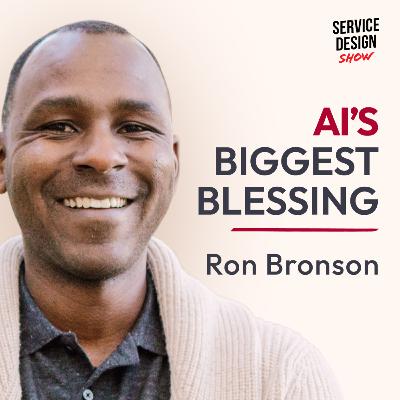

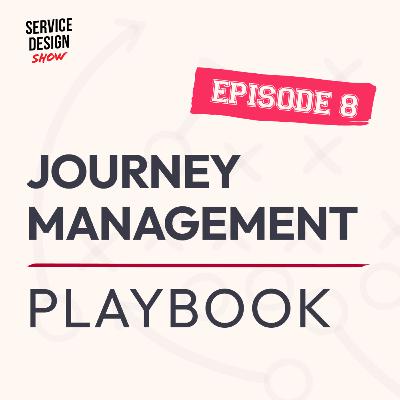
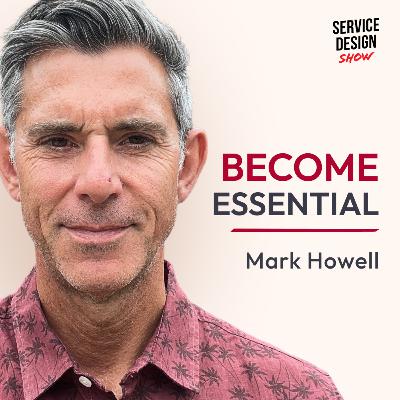
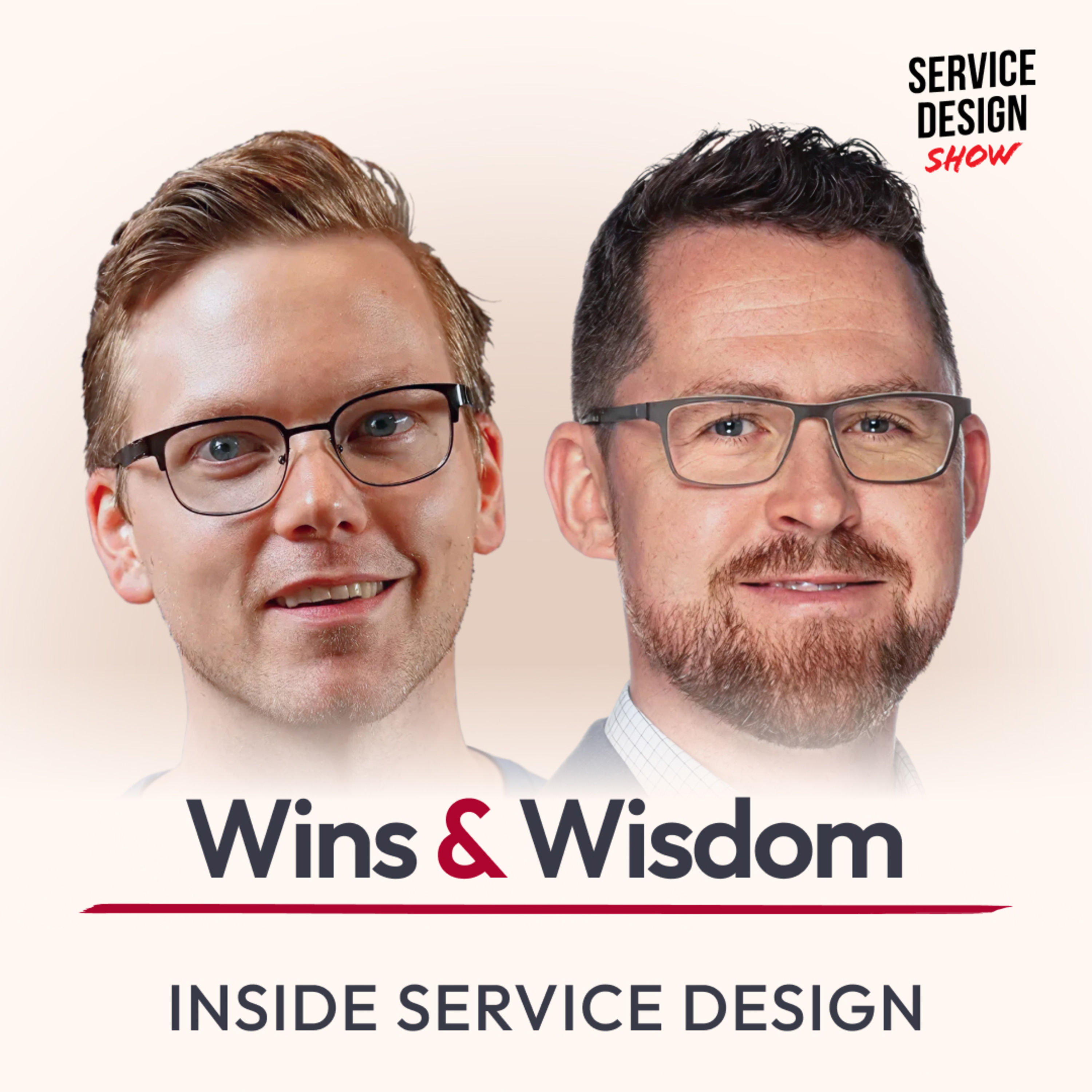
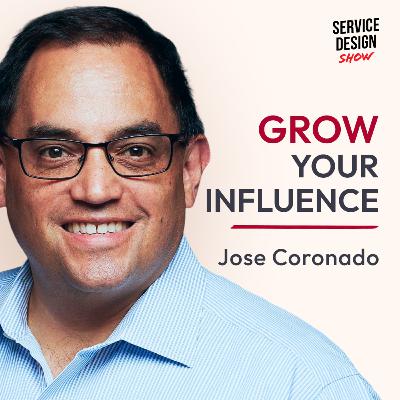
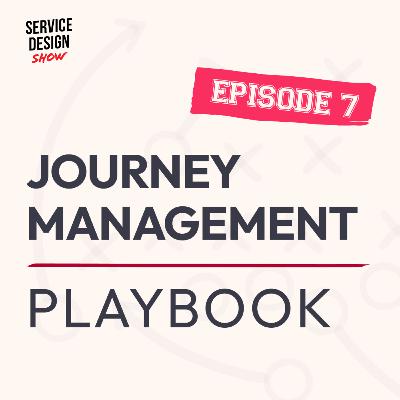
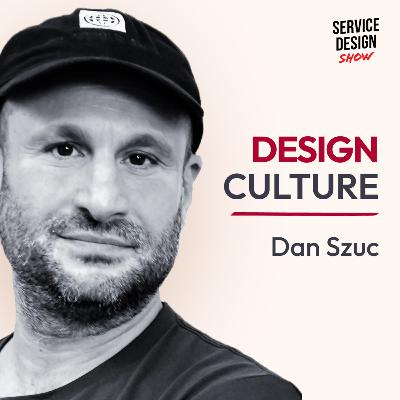

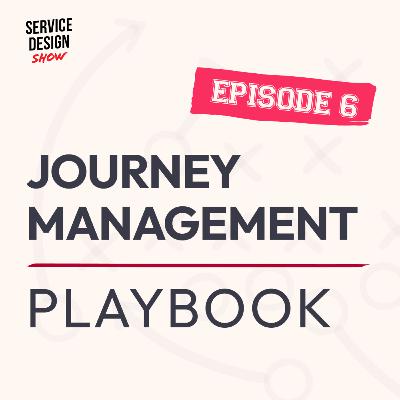
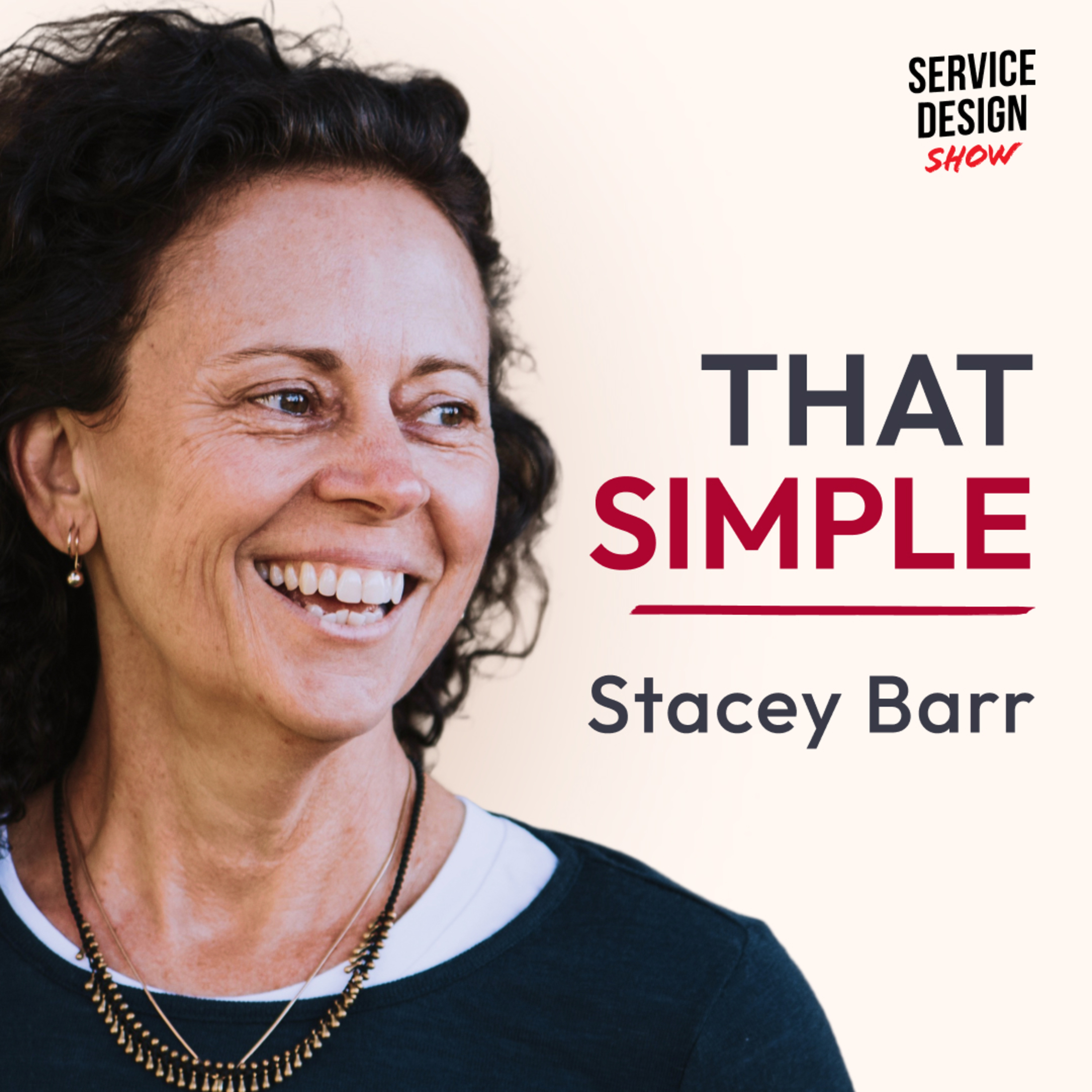
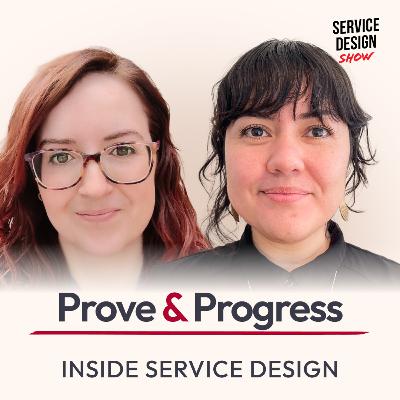
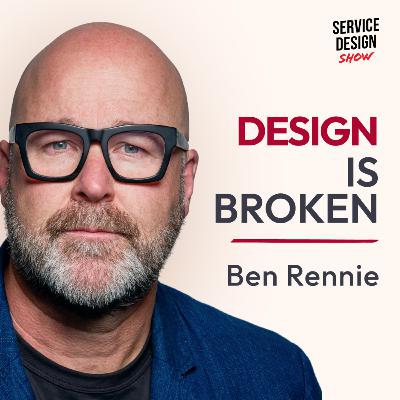
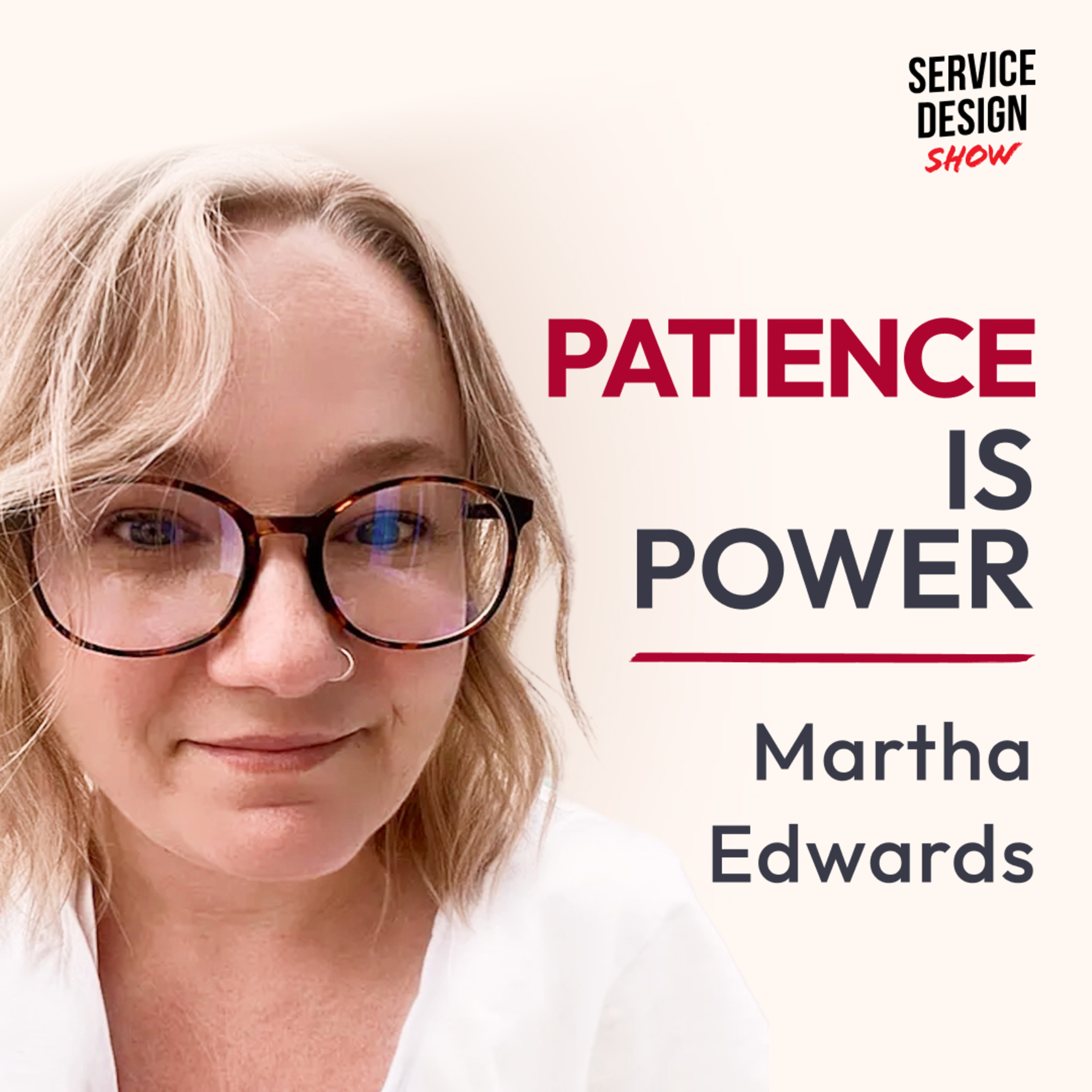
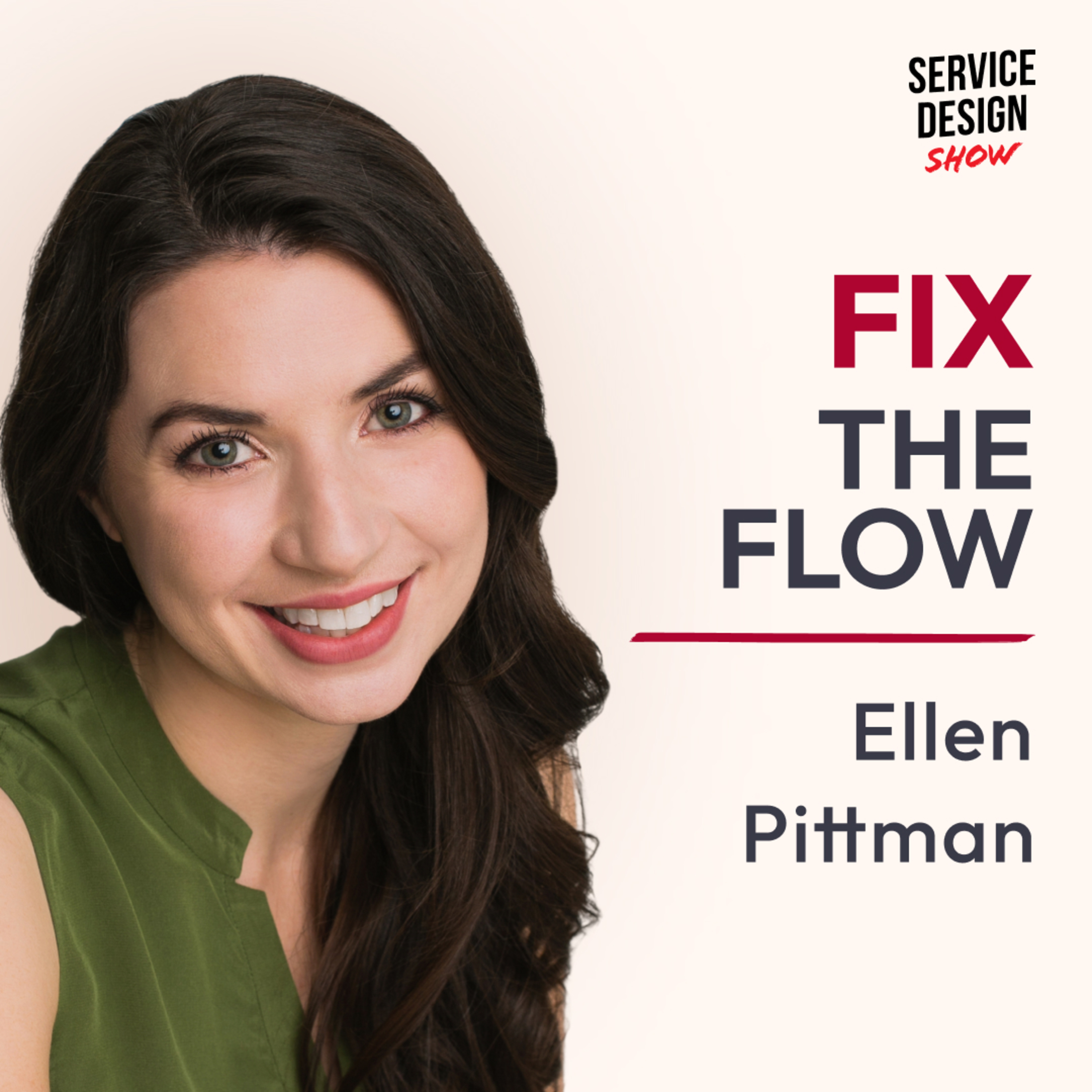
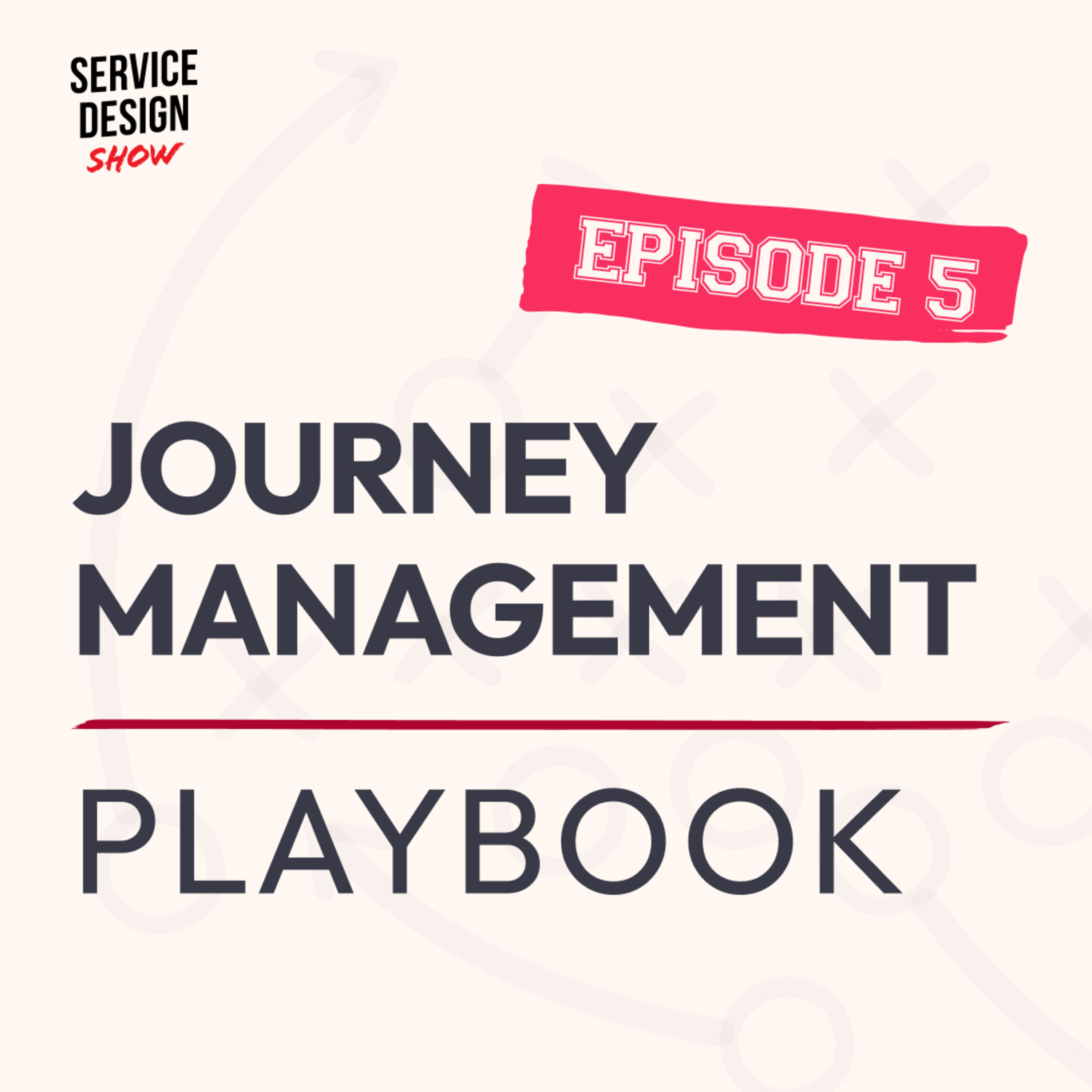
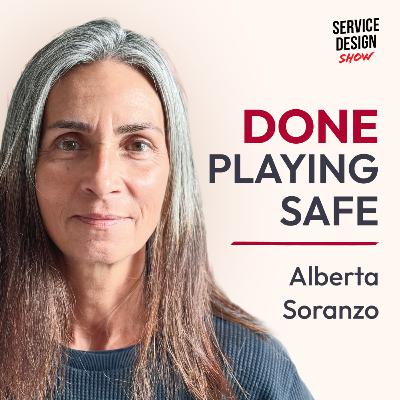
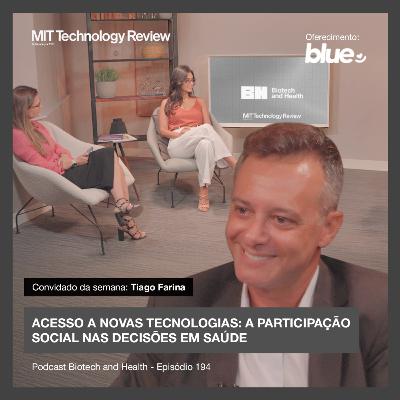
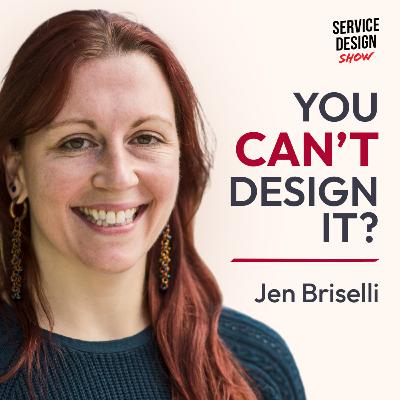
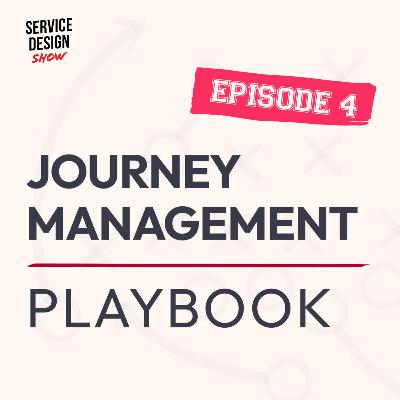



The problem that designers are facing is that creative work is regarded as feminine. In a male dominated culture, designers face workplace bullying in the form of social exclusion, work obstruction, verbal hostility, and stereotyping. 30:20
hi. how can one with hearing impairment use your podcast? is there any text available?
I'm going to be studying service design for my masters soon and this series is really helping me out!!! I've been into graphic design and illustration so far and just starting out in service design. Very informative podcasts!! Thank you :)
nice episode